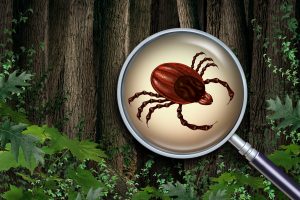In 2012, a blonde-haired woman in an electric wheel chair, accompanied by her husband, a Vietnam veteran and a strong-willed advocate, rolled down the hallways of the state capitol’s House office building in Tallahassee. They stopped in front of a smiling, stocky representative with a southern accent and receding white hair. The man got down on one knee and asked, “So what brings you here today, little lady? What can I do for you?” In a soft but adamant voice, the lady in the wheelchair, Cathy Jordan, stated, “I’ve come to talk about legalizing medical marijuana, which saved my life.” The man gasped, asked his aid to help him up to his feet, and said breathlessly, “I’m sorry, I can’t help you. It was nice meeting you.”
It wasn’t the first year she went there. Her husband, Bob, and her advocate friend, Jodi James, were coming to the capitol for many years, telling them how Cathy, who had been diagnosed with ALS in 1986, was alive to tell the tale because she smoked cannabis in Florida since 1989.
In the Beginning…
Florida’s journey to get medical cannabis is a long strange one, with many baby steps and several stumbling ones.
Many people never guess that Florida actually had legal cannabis for patients long before the first state went legal in 1997.
It was back in the early eighties that the very first patients to receive legal cannabis came out of Florida. Irv Rosenthal and Elvy Musikka were two of the original group of people to get cannabis grown and sent to them by the federal government for medical purposes. That was challenged in 1988 in the case of Florida vs. Musikka, and Florida became the first state to have a medical necessity defense to smoke cannabis. That was followed in 1991 by Florida vs. Jenks, which allowed someone to home grow on a non-profit basis to care for someone whose health depended on its use.
Cathy actually met with Gov. Jeb Bush in 1999 with Bob and told them about how she kept the ALS at bay by smoking cannabis. By the end of their meeting, the Governor had tears in his eyes and promised to help, but all that happened was a note to the sheriff and a promise to get a prescription for Marinol, a synthetic THC that was proven not to work. Later, in a press conference, Gov. Bush denied ever meeting someone who used cannabis as medicine.
Undaunted, Cathy, Jodi, and Bob convinced freshmen Rep. Jeff Clemens and Sen. Dwight Bullard to sponsor a legalization bill. The day after the press conference to announce the new bill, Cathy and Bob went home, only to have their house raided by the Manatee County drug task force. Thanks to the 1991 medical necessity case, the case was dropped and Bob was allowed to continue growing for Cathy, but they lost all of their plants and growing equipment. To make things worse, the bill they had just announced died in committee that session. It seemed hopeless, but two things happened in the next years to change Florida’s course towards legalization.
The Game Changers: Charlotte Figi and John Morgan
The first was Dr. Sanjay Gupta’s “Weed” special on CNN, which depicted the plight a of little girl named Charlotte Figi who had a rare disease named Dravet’s Syndrome, which caused her to have hundreds of seizures a day. The Stanley brothers, a group of growers in Colorado, had developed a strain previously known as “Hippies Disappointment,” because it was very low in THC and high in CBD. Studies had shown that this type of cannabis worked well in treating this type of ailment. Clemens, along with Representatives Kathy Edwards and Matt Gaetz, saw this as a way to crack open the pathway to legalization, since the patients were vulnerable children and the treatment lacked the THC that caused the euphoria sought by recreational users. They worked together to create the bill that would legalize medical cannabis in Florida.
The other thing that happened was a new effort by omnipresent Florida trial lawyer John Morgan. John’s brother Tim, paralyzed in an accident while working for Disney World 30 years ago, began using cannabis infused in chocolate squares for many years to deal with the severe ghost pain in his legs. Their father died of cancer, but the brothers gave him cannabis to ease his pain and increase his appetite and it gave him several more years of life and a dignified death. For those reasons, Morgan decided to use his wealth and connections to get together a ballot initiative to create a constitutional amendment to make medical cannabis legal for severe debilitating conditions.
In 2014, the Charlotte’s Web bill passed the legislature, but restrictions were added during the final phases of passing that severely restricted the market of growers. To have a dispensary, you have to be a Florida nursery with at least 30 years of business in the state and the ability to grow 400,000 plants. Of 7,001 nurseries in Florida, only 21 qualify and only five would be chosen from five regions of the state. Also, all growers had to be the sole entity from seed to sale, with no contracting out. The cost to enter the market was too high; it would take years to break even with the small market.
So Close and Yet so Far
Also in 2014, Morgan’s ballot initiative, which needed 60% of the vote to pass, came razor close with 58%, but did not pass. Morgan put millions into the campaign, but was thwarted by money and influence from Sheldon Adelson the billionaire casino financier, and Mel Sembler, of Drug Free America Foundation and the failed “Straight, Inc.” treatment center that gained notoriety from the incidences of severe cruelty and suicides. Both of these men lost sons to drug overdoses (although not from cannabis), and Adelson was also funding cannabis research in Israel.
In the following year, while the Department of Health (DOH) struggled to create to rules for distributing the licenses and the rules for cultivating and distributing, the legislature passed the “right to try” bill to allow terminal patients to access cannabis products with higher THC. At the same time, Morgan and his “United for Care” group retooled the ballot initiative and collected petitions for another round.
It took two years, which included several lawsuits against the DOH for improper handling of the scoring process that awarded the dispensing organizations before the first product got into the hands of a patient. Even then, the press in Florida failed to take the new industry seriously, calling the first delivery of an oil product to a father of a child with Dravet’s “the first legal dope deal in Florida.”
We Voted “Yes” on Amendment 2
The number of dispensing organizations, which was originally set at 10 and reduced to five, grew to seven after the first lawsuits completed, but only two opened dispensaries, produced, and delivered product when the 2016 elections came around. This time, Amendment Two won by whopping 71.3%, the highest of any state legalization initiative.
It then fell on the DOH and the legislature to fulfill the mandates of the amendment and create the rules to get the law moving and provide legal access to qualified patients.
2017 Year in Review
January came and the DOH’s rules were minimal and insufficient to implement the amendment. The DOH’s Office of Compassionate Use (OCU) was led by an appointee of the governor’s office, who got the job with no competition and questionable credentials, thanks to his sister, who worked for the governor and tweaked his resume for the position. The OCU held a five-city public forum that was attended by hundreds of citizens and advocates in each city, but yielded no changes in the scant rules.
So it was up to the legislature again to put together a bill to implement the law. The Senate produced six different bills to bring to committees. Only one went forward, which included parts of four of the other bills but ignored the sole bill that broke the vertical “seed-to-sale” model into a horizontally integrated, free-market system. The House worked behind the scenes on a single bill that has noticeable influence by Mr. Sembler and was highly restrictive. In its first iteration, the House bill not only banned smoking but also banned vaping for all but terminal patients.
During months of committees and 60 days of session, committees met, public input was minimalized, and much of the work of crafting the bills was done by lobbyists and advocates behind closed doors. But, at the end of the session, based in part on an argument between the House and Senate as to the number of brick-and-mortar dispensaries each licensee could have, the Senate adjourned without passing the final bill.
Thanks to fights with the governor over his pet projects and a back-room deal to fund them after the legislature has ended with a budget that originally excluded them, the legislature came back for a special session and completed the implementation bill.
Of course, there were more back-room deals that molded the final bill, as well. Suddenly, preference was given to citrus growers for two of the next ten licenses that would try to service the estimated 450,000 qualified Florida patients and part-time residents. That was due to money and influence from a Brazilian orange magnate associated with Minute Maid and Coca-Cola, even though senators claimed it was for Florida range growers struck by citrus chancre and citrus greening diseases.
It’s a Done Deal. For Now…
Finally, on Friday, June 23, 2017 at end of the business day, Governor Rick Scott finally signed the implementation bill into law.
In the meantime, even though ALS is a qualifying disease, smoking, which is the only method of ingesting cannabis that is keeping Cathy Jordan alive, is prohibited. John Morgan will be suing the state in a constitutional challenge, since the bill did not conform to the amendment. Tampa Bay businessman, Joe Redner, is also filing a lawsuit to allow patients to grow their own plants. Both cases are still pending as of this printing. For Florida, what a long strange trip it has been, so far…





